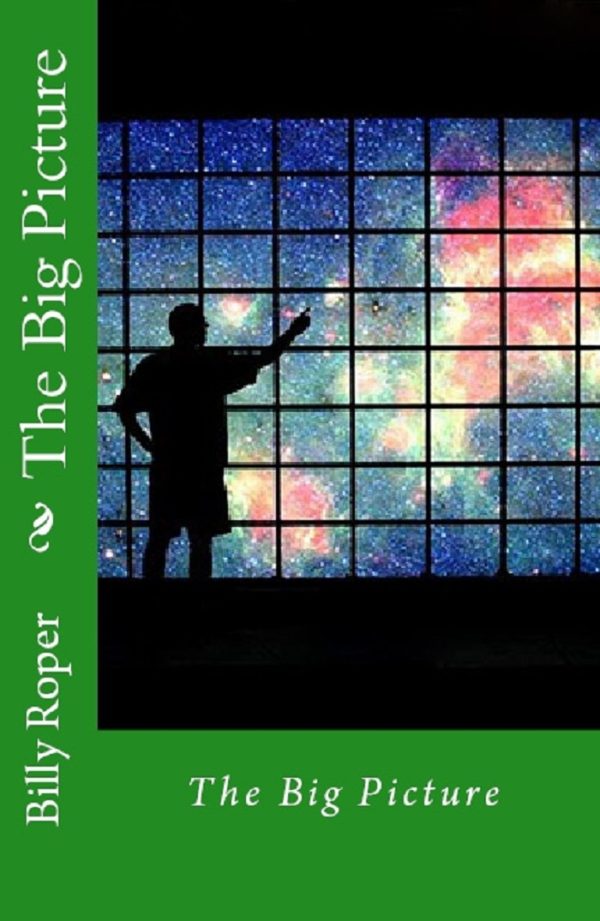The Big Picture by Billy Roper
The Big Picture
by Billy Roper
127 pages, CreateSpace, $9
Part of the new wave of Rightist movements is a desire to recapture culture from the Left, and that includes fiction, music, art and essays. Writer Billy Roper is perhaps best known for his fiction, but also has written a number of non-fiction works, including most recently The Big Picture, which is a summary of his beliefs and methods over almost three decades of pro-nationalist activism.
A former personnel director for the National Alliance, Roper writes at Divine Truth Ministries and WriterBeat, and has been interviewed by Amerika before. He is well-known to many in that intersectional land between the right wing, traditionalism, white nationalism and the Alt Right.
With The Big Picture, he writes in a conversational and congenial style as if addressing a group of neighbors or friends. The topic is the downfall of Western civilization, including demographic genocide, and how to reverse it, starting with how to bring other people into the fold and awaken them from the brain-numbing dream that is modernity. Most people live in a world of symbols and emotions, unaware of what those refer to, and therefore unable to decipher them to realize that they are toxic illusion, much like modern life is covertly miserable but no one will mention it.
Roper writes about balkanization, or the coming division of the West into tribes after the failure of diversity and the collapse of liberal democracy, which will crucify itself by trying to force globalism and backdoor socialism despite achieving Venezuela-level results. In his eyes, the balkanization has already begun, and what matter is whether Western people can rediscover or create an identity, and thus band together as a tribe instead of being divided further by elective interests.
But you know, it’s never taken a majority to lead our people, or to change history. As Samuel Adams wrote, the ones who will always make the difference will be that tireless, irate minority continually lighting brushfires in people’s minds. That time around, it only took 3%. This time, it might take a crisis event to kick things off, a economic collapse such as the credit bubble popping, a war, or maybe the Hispanics going first, declaring La Reconquista a done deal, We’ll see. None of us have a crystal ball, but I can tell you than multiracial democracy can’t fly. Nietzsche told us that what cannot fly must fall, and what is falling, we should still push, and say, “fall faster”! Balkanization is happening, right now. People are voluntarily migrating and re-segregating racially. (121)
Writing in this easily flowing style, he tackles his vision of a nationalist future: European-descended people uniting and forming a breakaway nation based on the principle that genetics are upstream of culture, which in turn informs politics and everything else we value. Because of its conversational nature, the book includes redundancies and follows a circular form of composition, where each chapter discusses another aspect of the topic and returns to a point of explaining one aspect of the forward path.
Roper is a dual-seedline Christian identity writer, but religion in this book is explained as a variant of a practical approach, such that he views reality as our responsibility and God as a distant Creator who sees but does not intervene. After the great flood, we were on our own, and the solutions that Roper advocates are based in hard practical realities, including natural selection and realistic morality. For that reason, this book is more nationalism flavored with religion and experienced common sense than a religious book.
Many of the Founding Fathers of the U.S., such as Benjamin Franklin, may have been Deists, and had a clockmaker’s view of God as the Creator who set in motion various mechanisms in the universe, but Who does not get involved in daily miracle-making. This runs counter to the idea of petitioning the Lord with prayer, or supplication, of course. Like other theological approaches, it doesn’t satisfactorily answer the question of the seeming contradiction between human free will and predestination, for some. However, if God the Creator was and is omniscient, then He knew what choices we would each make before we were ever created, so allowing for free will within the framework and context of His plan as variables is almost, from a human conceptual reference point, conceivable. What is not conceivable, is that He could not have anticipated and planned for all of our possible free will choices, simultaneously, if He is indeed God, after all. Think of the universe as His very own “choose your own adventure†book, with the last page ending the same, no matter what path we take to the ultimate, inevitable goal. God can do anything, but fail. (6)
In among the practical everyday wisdom of how to save an imploding civilization from itself, The Big Picture includes a number of philosophical and theological arguments of startling clarity. The point of the book, strategically, is to reduce the ambiguity of questions of the future to a few simple principles that represent the highest degree of reduction — not deconstruction — to form that can be achieved. As a result, its simplicity is deceptive: behind this plain talk lurks a tendency to see the crux of any issue and to flip it around into an action agenda.
Most will find something to disagree with here, including the parts where The Big Picture waxes militant or spiritual. However, its largest theme is unification, or the convergence of different threads like religion or politics into a philosophy of racial survival as a means to having a society with purpose and thus, a pleasurable experience of life that makes our people want to survive and thrive. Where at first blush it seems casual, the depths of this book emerge from its nuance, making for a thought-provoking and insightful quick read.
Tags: balkanization, billy roper, christian identity, nationalism, white nationalism










